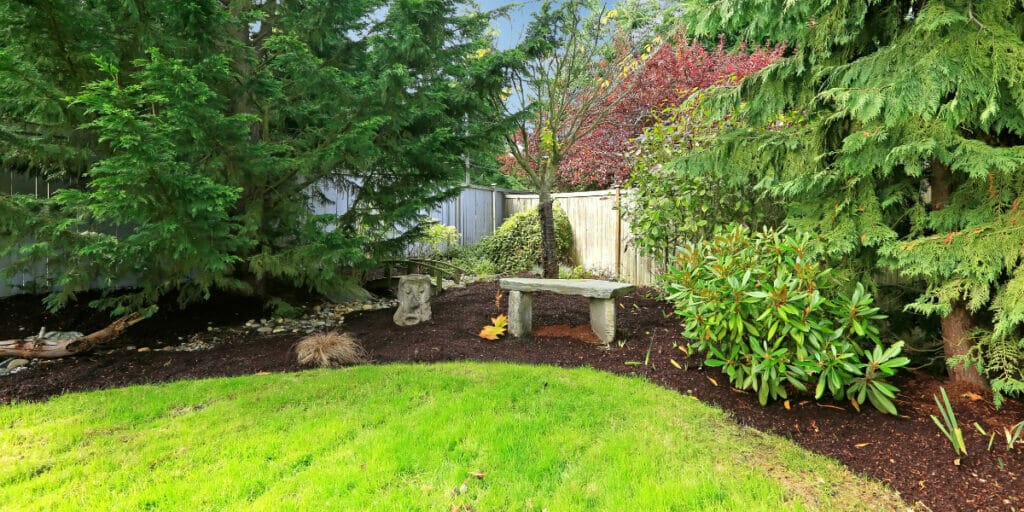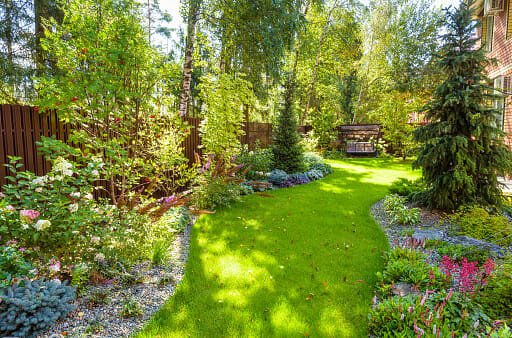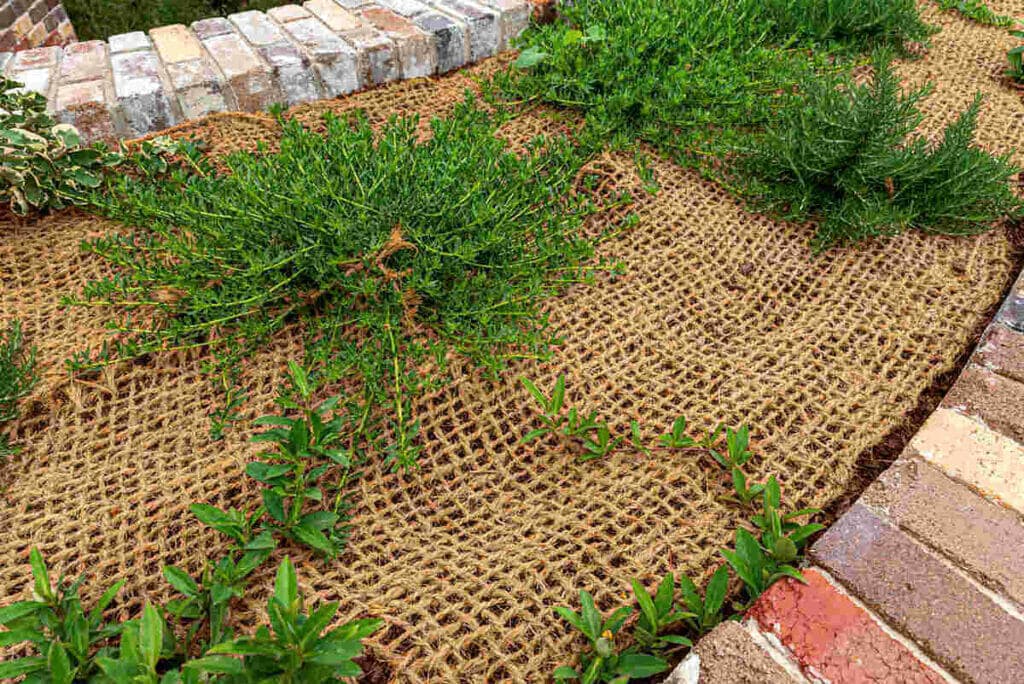Small Space, Big Impact: Innovative Landscape Design Techniques
Small-space landscaping is a captivating realm of design that beckons both homeowners and professional landscapers alike. In this brief exploration, we delve into the allure of compact outdoor spaces and the intricate art of transforming them into enchanting havens.
The appeal of small-space landscaping lies in its potential to maximize every square inch of outdoor real estate. These miniature landscapes offer an intimate and cozy ambiance, often fostering a stronger connection with nature. Moreover, they are typically more affordable to design and maintain, making them accessible to a broader audience.
However, the charm of small outdoor areas comes with its challenges. Limited space necessitates thoughtful planning and imaginative solutions. Issues such as spatial constraints, privacy concerns, and functionality must be carefully addressed to make the most of these precious corners.
Creativity and strategic planning become paramount in small-space landscaping. Innovative design choices, the strategic use of plants, and multifunctional elements can work wonders in turning cramped yards, balconies, or courtyards into stunning, functional retreats. In the following sections, we will explore various strategies and ideas to help you unlock the full potential of your petite outdoor oasis.
Understanding Your Small Space
Understanding your small space is essential to make the most of its potential. To do this effectively, consider three key aspects:
- Assessing the available area
- Identifying microclimates within the space
- Evaluating existing structures and features
Assessing the available area: Measure and map your small space. This includes the floor area and vertical spaces like walls and ceilings. Understand the limitations and dimensions of your space to optimize every inch. Utilize tools like floor plans to create a visual representation, aiding in efficient planning.
Identifying the microclimates within the space: Microclimates within a small area can vary in light, temperature, and humidity. Observe and document these variations to determine suitable zones for different purposes. For instance, a sunny corner could be ideal for plants, while a cozy nook may serve as a reading spot. Tailoring your design to these microclimates enhances functionality and comfort.
Considering existing structures and features: Small spaces often have unique architectural elements or limitations. Embrace these characteristics in your design. Utilize alcoves for built-in storage, exploit exposed brick walls for aesthetic appeal, or create multifunctional furniture to maximize usability. Recognizing and working with the existing features can enhance the charm and functionality of your small space.
Incorporating these three elements into your approach will empower you to unlock the full potential of your small space, creating an environment that not only maximizes functionality but also reflects your style and needs.
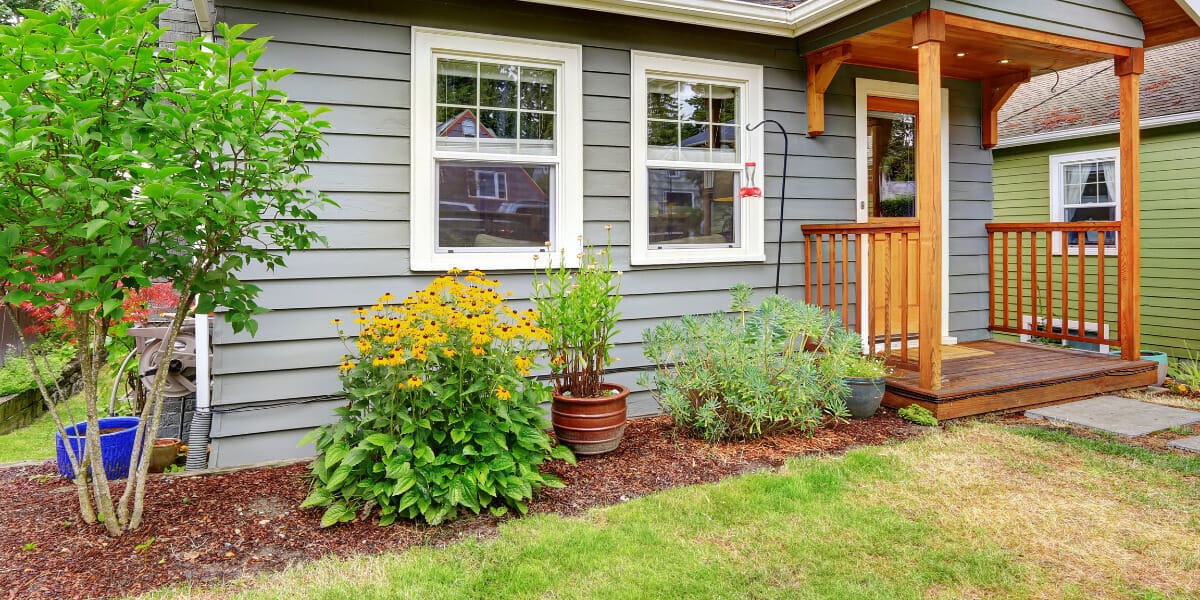
Design Principles for Small Spaces
Designing for small spaces requires a thoughtful approach that maximizes functionality and aesthetics. Several fundamental principles can help create harmonious and visually appealing small slots.
- Simplicity as a guiding principle: Simplicity is paramount in small-space design. A clutter-free environment with clean lines and minimalistic decor choices can make a space feel larger and more inviting. Avoiding excess furniture and unnecessary decorations is essential.
- Scale and proportion in small-space design: Properly scaled furniture is crucial. Opt for smaller, multifunctional pieces that fit the space comfortably. Ensure that furniture and decor items are proportionate to the room’s size to maintain a balanced and visually pleasing composition.
- Focal points to create visual interest: In a small space, creating a focal point can draw the eye and add depth. This could be a striking piece of artwork, a unique piece of furniture, or even a well-placed mirror that reflects light and opens up the space.
- The importance of vertical gardening: Utilizing vertical space is critical to small-space gardening. Vertical gardens, hanging plants, and wall-mounted shelves can maximize greenery without sacrificing floor space. They also add texture and visual appeal to the area.
- Embracing minimalism: Minimalism is an ideal design philosophy for small spaces. It involves decluttering, selecting a cohesive color palette, and opting for functional pieces that serve multiple purposes. By embracing minimalism, you create an uncluttered, serene atmosphere that allows the small space to breathe and feel more spacious.
Incorporating these principles into your small-space design can help you maximize limited square footage, creating a functional and visually pleasing environment.
Plant Selection for Small Spaces
Plant selection for small spaces is crucial to creating an aesthetically pleasing and functional garden or outdoor area. To maximize the potential of limited space, consider the following fundamental principles:
- Choosing the right plants for your climate: Understanding your local environment is fundamental to successful plant selection. Ensure your chosen plants are well-suited to your area’s temperature, rainfall, and sunlight. Native plants often thrive in their natural environment, making them a smart choice for small spaces as they require less maintenance and offer a seamless integration into the local ecosystem.
- Incorporating evergreens for year-round appeal: To maintain visual interest throughout the year, include evergreen plants in your selection. These plants retain their leaves year-round, providing color and texture even in winter when deciduous plants have shed their foliage.
- Selecting low-maintenance and compact varieties: Opt for plant varieties that are naturally compact and require minimal care. Dwarf shrubs, ground covers, and ornamental grasses are excellent choices for small spaces, as they add texture and character without overwhelming the area with excessive growth.
- Using containers and raised beds for flexibility: Containers are valuable tools for small-space gardening. They allow you to cultivate various plants while controlling their growth and placement. Containers, in particular, offer the flexibility to rearrange your garden as needed, making them ideal for patios and balconies.
Strategic plant selection is the foundation of successful small-space gardening. By considering climate, evergreens, low-maintenance varieties, and container gardening, you can create a beautiful and manageable outdoor oasis that maximizes the potential of your limited space.
Creative Use of Hardscaping
Creative use of hardscaping in landscaping involves innovative approaches to make outdoor spaces more functional, aesthetically pleasing, and enjoyable.
Here are four key aspects to consider:
- Maximizing pathways and walkways: Incorporating well-designed pathways and walkways can transform a garden or outdoor space. Different materials like stone, gravel, or pavers creatively add texture and visual interest. Curving tracks can create a sense of exploration and discovery, while strategically placed lighting can make them usable even at night. Integrating benches or seating areas along these paths encourages relaxation and appreciation of the surroundings.
- Incorporating multifunctional furniture: Hardscaping isn’t limited to the ground; it extends to furniture and fixtures. Multifunctional furniture, like built-in benches with storage, outdoor kitchen islands, or fire pit seating that doubles as a table, can optimize space and enhance the usability of your outdoor area. Choosing materials that can withstand outdoor conditions ensures durability and longevity.
- The role of mirrors in small-space design: Mirrors can be an unexpected yet ingenious addition to hardscaping, especially in small spaces. Placing mirrors strategically can create an illusion of depth, making compact areas seem more spacious. They also reflect natural light, brightening up shaded spots. Beveled or ornate frames can add an element of artistry to your outdoor design.
- Introducing water features and sculptures: Water features like fountains, ponds, or cascading water walls can add a soothing and harmonious element to your hardscape. Sculptures, whether abstract or figurative, contribute to the overall aesthetics and can be strategically placed as focal points or surprises within the landscape. These elements introduce movement, sound, and a touch of artistry to your outdoor space.
Color and Texture in Small-Space Landscaping
- The psychology of color in design: Color plays a pivotal role in small-space landscaping, influencing our emotions and perceptions. Warm hues like reds and yellows can make a compact area feel cozy and inviting, while cool tones such as blues and greens evoke a sense of tranquility. Understanding the psychology of color enables homeowners to choose palettes that resonate with their desired ambiance, making their small outdoor spaces more enjoyable and visually appealing.
- Using color to create depth and interest: In confined landscapes, strategic use of color can create an illusion of depth and visual appeal. A monochromatic scheme with varying shades and tones can visually expand the space while contrasting colors can draw attention to specific features or focal points. Incorporating color gradients in plant selections, pots, and outdoor furniture can make a small area feel more dynamic and spacious.
- Texture through plant choice and materials: Texture adds richness and tactile appeal to small-space landscaping. Mixing plants with diverse foliage, such as smooth succulents, feathery grasses, and rough-textured bark, creates a multi-dimensional experience. Combining different materials like stone, wood, and metal in hardscape elements like pathways and garden borders adds further texture, making the space visually engaging and tactilely stimulating.
- The interplay of light and shadow: Harnessing the interplay of light and shadow is crucial for small-space landscaping. Strategic placement of lighting fixtures, such as uplights and downlights, enhances the aesthetics, creates depth, and highlights critical elements during the evening. The shifting patterns of light and shadow throughout the day contribute to the evolving beauty of the small space, making it a dynamic oasis to enjoy from sunrise to sunset.
Incorporating these principles of color and texture into small-space landscaping empowers homeowners to transform even the most limited outdoor areas into enchanting and inviting retreats that cater to both the senses and the soul.
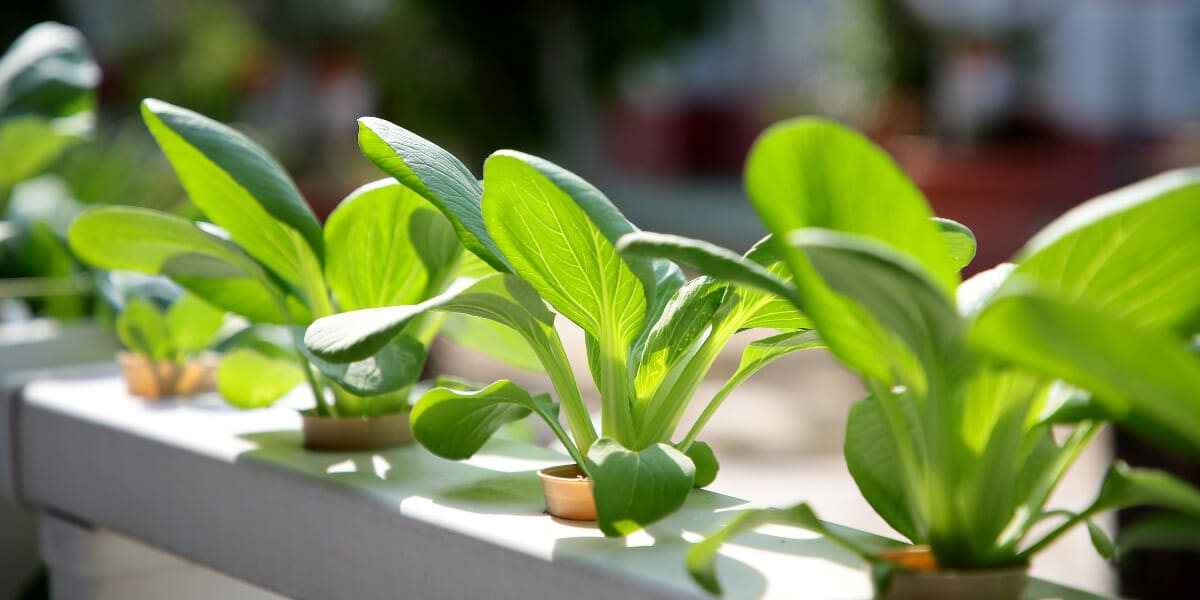
Sustainable Practices in Small-Space Landscaping
Small-space landscaping presents a unique opportunity to embrace sustainable practices that maximize environmental benefits and aesthetic appeal. Here are four key elements to consider when creating an eco-friendly small-space landscape:
- Water-wise landscaping techniques: Small spaces demand a thoughtful approach to plant selection. Opt for native and drought-resistant species that require less water. Incorporate xeriscaping principles like mulching and grouping plants with similar water needs to minimize water usage and maintain soil moisture. Consider installing rain gardens or bioswales to capture and filter rainwater naturally.
- Implementing efficient irrigation systems: To minimize water wastage, install intelligent irrigation systems with moisture sensors, timers, and drip irrigation. These technologies can ensure that your plants receive just the right amount of water, reducing runoff and overwatering, which can harm both plants and the environment.
- Sustainable materials for hardscaping: Choose eco-friendly materials like reclaimed wood, recycled concrete, or permeable pavers for paths and patios. These options reduce the environmental impact and contribute to a more sustainable landscape design.
- Eco-friendly maintenance practices: Adopt organic gardening techniques, such as composting, mulching, and using natural fertilizers, to promote healthy soil and reduce the need for chemical pesticides. Regularly maintain your landscape by pruning and weeding to keep it thriving and resilient.
Incorporating these sustainable practices into small-space landscaping conserves resources and creates a harmonious and inviting outdoor space that benefits you and the planet. By carefully considering water usage, materials, and maintenance, you can cultivate a small-space oasis as eco-friendly as beautiful.
Maintenance and Seasonal Care
Maintenance and Seasonal Care are crucial aspects of small-space gardening to ensure the health and vibrancy of your limited outdoor area.
- Year-round maintenance routines are essential for sustaining a flourishing small garden. Regular tasks like weeding, watering, and fertilizing should be carried out consistently. Monitoring for pests and diseases is also critical, as small spaces can be more susceptible to infestations due to their confined nature.
- Seasonal considerations for small-space landscapes involve adjusting your gardening practices to the changing seasons. In the spring, focus on planting and rejuvenating soil. Summer requires vigilant watering and protection from intense sun. Fall is the time for harvesting and preparing for winter, while winter maintenance protects delicate plants from frost.
- Pruning and shaping for compact growth is essential in small gardens to optimize space and aesthetics. Careful pruning helps maintain plants’ desired size and shape, ensuring they don’t overwhelm the area. This practice also promotes air circulation and sunlight penetration, fostering healthier growth.
- Addressing common small-space gardening challenges is crucial to overcoming limited space constraints. These challenges may include selecting suitable plant varieties, vertical gardening solutions, maximizing container gardening, and utilizing multifunctional furniture for aesthetics and practicality.
Year-round maintenance, seasonal adaptability, pruning, and addressing specific challenges are critical to maintaining a thriving small-space garden. Even the tiniest outdoor areas can become lush, beautiful, functional green spaces with proper care and attention.
Case Studies: Small-Space Landscape Success Stories
“Case Studies: Small-Space Landscape Success Stories” offers an inspiring glimpse into the world of exquisitely designed small outdoor spaces, where creativity and innovation transform even the tiniest plots into captivating havens. This collection of case studies showcases the final results and delves into the design techniques and principles that made these transformations possible.
In each featured case, designers have maximized the potential of limited square footage, proving that small spaces can be just as enchanting as their larger counterparts. These success stories highlight the power of thoughtful planning and attention to detail, from urban balconies to narrow backyard corners.
The case studies are brought to life with striking before-and-after photographs that vividly capture the remarkable metamorphosis of each space. Witness the magic of overgrown and neglected areas being reborn into elegant retreats filled with lush greenery, cleverly integrated seating, and captivating focal points.
Moreover, client experiences provide valuable insights into the impact of these transformations on their daily lives. Learn how these small-space landscapes have become extensions of their homes, offering solace, beauty, and functionality.
Whether you’re a homeowner seeking inspiration for your own small outdoor space or a landscaping enthusiast eager to discover innovative design concepts, “Case Studies: Small-Space Landscape Success Stories” is a testament to the boundless potential of thoughtful design in turning small, neglected areas into thriving, charming oases of nature and serenity.
Conclusion
In summarizing the essential aspects of small-space landscaping, it becomes evident that the art of transforming limited outdoor areas into captivating havens of beauty and functionality is a testament to human creativity and resourcefulness.
Our journey through small-space landscaping has emphasized several key takeaways. We’ve learned that careful planning, prioritizing functionality, and maximizing vertical space are paramount in making the most of compact outdoor areas. The selection of appropriate plant varieties, scaled furnishings, and innovative storage solutions can contribute significantly to optimizing these spaces. Moreover, maintaining a harmonious balance between hardscaping and greenery cannot be overstated, as it infuses life and vibrancy into confined environments.
Small outdoor spaces possess an enduring charm that transcends trends and seasons. Well-designed tiny gardens, balconies, and courtyards showcase the boundless potential of even the most miniature plots. Their allure lies not only in their aesthetics but also in their ability to provide functional, intimate retreats for relaxation and contemplation. These pockets of serenity can evolve alongside their owners, adapting to changing needs and preferences. Furthermore, the sustainability and eco-friendliness inherent in small-space landscaping reflect our growing commitment to preserving the environment. The enduring beauty and functionality of these well-crafted areas remind us that we can transform even the most limited surroundings into captivating outdoor sanctuaries with thoughtful planning and ingenuity.

